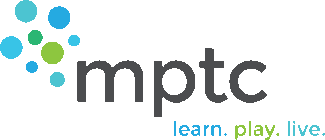What should your child be able to do or say at 24 to 36 months? Take a look at this list of milestones and see if your child needs speech therapy, physical therapy, or occupational therapy.
24-30 Months

- Standing on one foot with hands on hips
- Walking upstairs using two feet on each stair
- Jumping 24 inches both forward and down

-
Established hand preference
-
Grasping a cup with one hand without spilling
-
Grasping spoon and turning hand to bring to mouth
-
Turning pages 1 at a time
-
Building a tower using 8 cubes
-
Folding paper in half
-
Cutting on line
-
Turning door knobs and jar lids
-
Stringing half inch beads
-
Recognizing outline of familiar pictures

-
Vocabulary grows from 100 words 450 words.
-
Using 2-3 word phrases
-
Speech is 50-75% understandable
-
Making the following sounds: “b”, “m”, “p”, “d”, “t”, “h”
-
Using pronouns (my, me, mine, you) in phrases
FUN FACT: On average, a 2-year old’s vocabulary increases by 5 words every day.*

-
Beginning to brush teeth if adult puts paste on and does the main brushing
-
Undressing self with only help with fasteners and pullovers with narrow necks

- Biting and chewing foods of various thickness
- Moving from drinking from a bottle to drinking from an open cup without spilling
- Beginning to use a fork
- A highchair is no longer needed

-
Consistently following 2-step directions will become common
-
Understanding and answering “where” and “what” questions will become consistent
-
Grouping toys by size, shape, and color

- Pretend play and sharing toys with other children and adults
- Following adult-directed tasks
- Consistently greeting familiar and unfamiliar people
FUN FACT: Toddlers are always learning behavior by watching people. Many of their behaviors (both positive and negative) are learned by watching others

- Bubbles
- Balls
- Simple puzzles
- Blocks
- Playdoh
- Sidewalk chalk or large crayons to work on grip/grasp
- Stickers
- Toy cars/trains
- Tricycle

-
Regressing physical skills
-
Not jumping with feet together
-
Complaining of pain with activities
-
Difficulty holding a cup or spoon
-
Difficulty chewing a variety of textures
-
Difficulty tolerating different textures in clothing, foods, and toys
-
Talking in phrases that are less than 2 words long
-
Not labeling common objects
-
Having a small vocabulary
-
Not producing “m”, “b”, “p”, “d”, “h”
-
Limited eye contact with other people
30-36 Months

- Standing on one foot with hands on hips
-
Walking upstairs shifts from using two feet on each stair to alternating feet
-
Jumping will increase to 24 inches both forward and down
-
Riding a tricycle
-
Climbing up rock wall independently

-
Completing simple 3-piece puzzle
-
Matching identical pictures
-
Copying drawing circles
-
Pouring liquid from one container directly into another
-
Holding a fork with a fist
-
Building a 9-block tower
-
Making continuous cuts with child-safe scissors

- Vocabulary growing from 100 words to 1,000 words
- Producing full sentences during conversation
- Speech is 75% understandable
- Making the “k” and “g” sounds
- Asking Wh- questions becomes frequent (e.g. what, where, when, whose, etc)

- Beginning to brush teeth with help from adult to put paste on brush and do main brushing
- Dressing self with help with fasteners only
- Putting shoes on with little assistance
- Potty training is almost complete

-
Chewing and swallowing “adult food” with lips closed (e.g. steak, raw vegetables, nuts, etc)
-
Moving from drinking from an open cup without spilling
-
Using a fork and spoon will become an independent task
-
A highchair is no longer needed

- 11-14 hours of sleep per day with one 2-hour nap during the day time
- Beginning to transition from crib to toddler bed
- Cuddling is very good at calming during this age
- A weighted blanket may help with calming
- Tolerating new fabrics in clothing
- Tolerating a variety of smells and noises

- Understanding and answering “where” and “what” questions will become consistent
- Consistently following 3-step directions containing “in”, “on”, “next to”
- Understanding time concepts (e.g. soon, later, wait)
- Matching and sorting similar objects and pictures
FUN FACT: By the time toddlers are 3 years old, their brains are almost full size in weight

-
Pretend play and sharing toys with other children and adults
-
Playing by rules of simple games
-
Consistently greeting familiar and unfamiliar people

-
Farm and farm animals
-
Potato Head
-
Balls
-
Puzzles
-
Tricycle
-
Playdoh
-
Kitchen / pretend play
-
Dolls
-
Simple books
-
3-wheeled scooter

- Not jumping in place
- Walking on their toes or falling a lot
- Not walking up and down stairs with a handrail
- Shaky, stiff, or weak movements
- Difficulty holding a fork and cup
- Difficulty chewing threw meat and vegetables
- Difficulty tolerating different textures in clothing, foods, and toys
- Talking in phrases that are less than 3 words long
- Having a small vocabulary
- Not producing “m”, “b”, “p”, “d”, “h”, “k”, and/or “g”

-
Following multistep directions consistently
-
Dealing with and managing emotions related to change
-
Completely potty trained
-
Following adult-directed tasks without much protest
-
Becoming fairly independent (eating lunch, washing hands)
-
Avoiding obstacles when walking and walking over various surfaces
-
Interacting with other children and adults well
